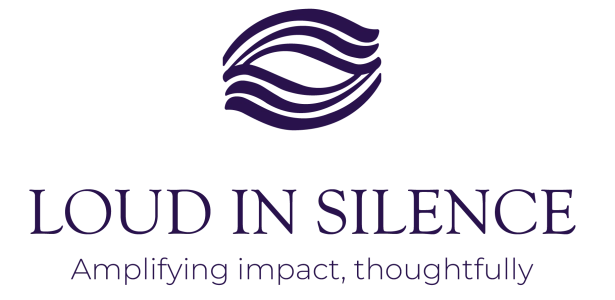That billboard... you know the one.
A young boy, no older than twelve, mid-stride in athletic gear. His face, a mixture of exhaustion and quiet desperation, rain clinging to his hair. The backdrop? A blurry, unsettling green. And then, the tagline: "Mẹ càng đòi hỏi, con càng mệt mỏi. Con chỉ muốn vô tư!" ("The more demanding the mother, the more exhausted the child. The child just wants to be carefree!").
It hits hard, doesn’t it? A gut punch. A textbook case of advertising walking a razor-thin line - intriguing yet terrifying for marketers like myself.
This image, already sparking heated debate online, encapsulates the minefield of modern advertising. The key question is no longer, “Is it a good branding campaign?” but rather, “Will this ignite a social media firestorm that incinerates the brand’s reputation?”
To navigate this shifting landscape, we must go beyond surface-level observations and examine the core sensitivities shaping consumer reactions today.
Understanding the Sensitivity of Modern Consumers
Let’s dispel a myth: Millennials and Gen Z aren’t just “easily offended snowflakes.” They are the first generations raised in an era of digital transparency - hyper-aware of social injustices and deeply skeptical of corporate virtue signaling. They demand authenticity, radical inclusivity, and, above all, brands that act, not just speak.
Ignoring these expectations is not just risky—it’s brand suicide. Here are the major sensitivity zones every marketer must navigate:
1. Culture & Identity: Respecting Evolving Perspectives
The world is changing. Cultural norms that were acceptable a decade ago may now be offensive. Whether we agree or not, today’s consumers challenge traditional power structures, and brands that fail to acknowledge this shift risk alienation—or worse, global backlash.
Remember Dolce & Gabbana’s ill-fated campaign in China? A Chinese model struggled to eat Italian food with chopsticks—intended as humor, but perceived as patronizing and culturally tone-deaf. The fallout? A canceled Shanghai fashion show and widespread boycotts.
The lesson? Understanding cultural nuances isn’t optional; it’s critical.
2. Gender & Equality: Moving Beyond Stereotypes
Gender roles are being redefined, and consumers are increasingly sensitive to advertising that perpetuates outdated stereotypes. It's vital to avoid reinforcing biases related to traditional roles and instead embrace inclusive representation that reflects the diversity of gender identities and expressions.

Consider the backlash against Burger King's UK ad campaign for International Women's Day. The ad featured the tagline "Women belong in the kitchen," which, while intended to be followed by a message about Burger King's scholarship program for female chefs, was widely criticized for being sexist and tone-deaf. The campaign sparked outrage on social media, with many calling for a boycott of Burger King. Yes, the outrage overshadowed their scholarship program for female chefs, proving that good intentions mean nothing if the execution falls flat.
3. Ethnicity & Diversity: Authenticity Over Tokenism
Diversity isn’t a marketing checkbox; it’s a fundamental expectation. However, empty gestures of diversity or stereotypical representations can be worse than no representation. Ensuring that your advertising reflects the authentic experiences and perspectives of diverse communities is crucial. A misstep in this area can have severe consequences.
The H&M; "Coolest Monkey in the Jungle" case is a textbook example of how a seemingly innocuous image can trigger a firestorm of controversy. The image was widely condemned as racist, with many accusing H&M; of being insensitive to the historical association of monkeys with racist stereotypes.
The company quickly removed the ad and issued an apology, but the damage was done. Their first-quarter operating profit tumbled by 62 percent to its lowest level in over a decade, according to DW.
Diversity in the creative process isn’t a suggestion - it’s a careful necessity.
4. Mental Health & Social Pressure: Handle with Care
Mental health awareness has surged, and consumers are hyper-vigilant about messaging that trivializes or exploits these issues. Hence, it's crucial to approach these topics with empathy and avoid perpetuating harmful stereotypes or unrealistic expectations.
General Motors aired an ad featuring a robot contemplating suicide after being replaced by a human worker. Intended as humor, it instead ignited outrage over its insensitivity to mental health struggles and the pain of job loss. The company pulled the ad, but this serves as a stark reminder to handle topics such as mental health with utmost care and avoid using them for comedic effect.
Is Sensitivity Really the Problem?
In an era where social media can turn a minor misstep into a full-blown controversy within minutes, brands can no longer afford to overlook the weight of their messaging. 'Cancel culture'—though often debated—has become a powerful force, holding brands accountable not just for what they say but for what they fail to acknowledge. But that doesn’t mean brands should operate in fear.
Consumers today don’t expect perfection. What they do expect is genuine sincerity.
They can forgive mistakes—if a brand listens, takes responsibility, and makes meaningful amends. But they won’t easily overlook empty promises, performative gestures, or tone-deaf messaging.
So, the real question for brands isn’t: "How do we avoid criticism?"
It’s: "Are we truly listening and understanding the people we serve?"
The “Demanding Mother” Billboard: A Case Study in Controversy
Now, let’s return to that billboard.
Was it a calculated play on emotional resonance? Absolutely. Was it good marketing? That's highly debatable and hinges entirely on the execution and, what product it's actually advertising (which, as of now officially, remains unclear).
- Symbolism: The weary child. The relentless rain. The pressure to achieve. It’s a striking depiction of “helicopter parenting,” the hyper-competitive academic culture, and the erosion of childhood innocence. The blurry, unsettling green backdrop amplifies the sense of unease and suffocating pressure.
- The Problem? The ad subtly casts mothers as the source of this pressure, pitting them against their children's desire for carefree joy. This is where the potential for harm escalates. It reinforces long-standing, often unfair, stereotypes: the overbearing mother, the detached mother, the mother who pushes too hard.

The potential interpretations and emotional responses this ad could elicit:
- Positive Interpretation (Unlikely): In a best-case scenario, a small fraction of parents might see this as a wake-up call and reconsider their parenting approach, ease up on their children's schedules, and prioritize unstructured play. This is a long shot, though.
- Negative Interpretation (Most Likely): The far more probable outcome is a wave of defensiveness and resentment. Mothers may feel unfairly blamed. "Am I a bad parent because I encourage my child to pursue their passions and excel?" "Why is “the mom”, always?" “I’m not that kind of mom!!” These are the responses to the ad in the recent couple of days. On the other hand, educators and psychologists might condemn it for its reductionist view of childhood pressure. Social media could amplify the controversy, turning it into a PR crisis.
After several days of being the "hottest topic" among Viet moms, these advertising billboards had been removed. While the brand behind this campaign hasn’t been revealed yet. Was it a wasted effort, a provocative statement without a clear purpose?
I might say the campaign did get attention, but in the wrong way.
But… some controversial ads did well, like Nike’s Kaepernick Ad. Was it a reckless gamble?
Nike’s 2018 “Dream Crazy” campaign featuring Colin Kaepernick - who kneeled during the national anthem to protest racial injustice - sparked immediate controversy. A segment of the American public, particularly conservative white Americans, reacted with outrage, burning Nike products and calling for a boycott. Yet, despite the backlash, Nike’s stock surged-up more than $6 billion two weeks later (according to NYTimes).
Why did Nike succeed?
- They understood their core audience – Nike wasn’t trying to please everyone; they focused on young, diverse, progressive consumers who resonated with Kaepernick’s message.
- They anticipated the backlash – But they knew their target audience would support the campaign even more fiercely than those who opposed it.
- They had a global market – Outside the U.S., consumers weren’t as invested in the controversy but still saw Nike as a bold, values-driven brand.
Nike vs. The "Demanding Mother" Billboard
Nike’s campaign tackled a highly divisive issue, yet it was aligned with their brand identity and audience values. They controlled the narrative and used the controversy to strengthen their brand.
In contrast, the Demanding Mother billboard wasn’t just controversial - it lacked a clear strategic foundation. Instead of fostering connection with consumers, it alienated a key demographic (parents) without a solid crisis management plan.
The outcome? One ad was criticized and taken down. The other was criticized but drove brand loyalty and revenue growth. The difference? Strategic risk-taking.
Strategies for Creating Sensitive and Effective Advertisements
Navigating this complex terrain requires a proactive, thoughtful approach. Here's a roadmap suggestion:
- Deeply understand your audience and your market: Don't rely on assumptions. Conduct thorough research using real statistics, surveys, focus groups, and social listening to understand their values, beliefs, and sensitivities.
- Embrace authenticity and transparency: Share real stories, showcase ethical practices, and be honest about your brand's shortcomings.
- Cultivate genuine cultural sensitivity: Hire diverse teams, consult with cultural experts, and be prepared to listen and learn from your mistakes.
- Pre-test your campaigns rigorously: Conduct focus groups with diverse participants and pay close attention to their reactions.
- Prioritize long-term brand building: Build a consistent brand voice and messaging that reflects your values and demonstrates a long-term commitment to social responsibility.
And don’t forget to ask yourself to double-check if you’re going in the right direction. Here are some easy questions that you can follow:
- Are we aware of the social and cultural implications of our message/ advertisement?
- Are we amplifying authentic voices, or are we appropriating them for profit?
- Could our campaign be misinterpreted, and if so, do we have a strategy to address the backlash?
The bottom line? Sensitivity isn’t about avoiding controversy at all costs. It’s about understanding the power of your message - and wielding it responsibly.
Because in an age where consumers hold brands accountable like never before, one misstep isn’t just a marketing failure.
It’s a reckoning.




